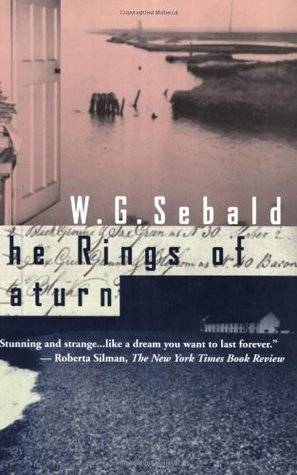

The Rings of Saturn
by W.G. Sebald and Michael Hulse
Ostensibly a record of a journey on foot through coastal East Anglia," as Robert McCrum in the London Observer noted, The Rings of Saturn "is also a brilliantly allusive study of England's imperial past and the nature of decline and fall, of loss and decay. . . . The Rings of Saturn is exhilaratingly, you might say hypnotically, readable. . . . It is hard to imagine a stranger or more compelling work." The Rings of Saturn - with its curious archive of photographs - chronicles a tour across epochs as well as countryside. On his way, the narrator meets lonely eccentrics inhabiting tumble-down mansions and links them to Rembrandt's "Anatomy Lesson," the natural history of the herring, a matchstick model of the Temple of Jerusalem, the travels of Sir Thomas Browne's skull, and the massive bombings of WWII. Cataloging change, oblivion, and memories, he connects sugar fortunes, Joseph Conrad, and the horrors of colonizing the Belgian Congo. The narrator finds threads which run from an abandoned bridge over the River Blyth to the terrible dowager Empress Tzu Hsi and the silk industry in Norwich. "Sebald," as The New Yorker stated, "weaves his tale together with a complexity and historical sweep that easily encompasses both truth and fiction." The Emigrants (hailed by Susan Sontag as an "astonishing masterpiece-perfect while being unlike any book one has ever read") was "one of the great books of the last few years," as Michael Ondaatje noted: "and now The Rings of Saturn is a similar and as strange a triumph.
Release Date:
April 16, 1999

